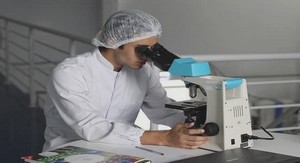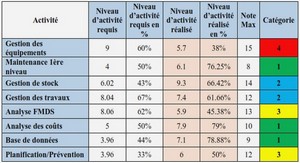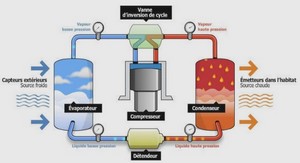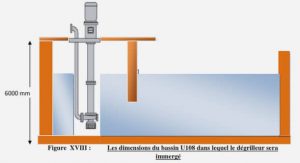Nowadays, the technological revolution is growing by a fantastical speed. Starting from the first industrial revolution where water and steam were used to mechanize the production to the third one where information technologies are used to automate the production. Today, we stand on the bridge of a new revolution that will change fundamentally our way of working, living and communicating with each other. This revolution known as Industry 4.0 (Xu et al., 2018) will bring changes that humans have never seen before. Robotics is one of the most important manifestations of this revolution (Atkeson et al., 2018). These technologies are used to improve the industrial production by integrating new systems that can replace humans and replicate human activities (Bautista and Wane, 2018). However, to make this revolution succeed, several challenges must be met, among them; technological challenges such as controlling these new nonlinear systems (Atkeson et al., 2018).
Currently, robotics can be used in many fields and for many purposes, for example, military (Liu et al., 2018), manufacturing processes especially in dangerous environment where humans cannot intervene (Clancy et al., 2018), in the medical domain (Ferguson et al., 2018), and so on. Laterally, new robot systems have been introduced to improve the rehabilitation treatment known as ”rehabilitation robots” or exoskeleton robots (Xie et al., 2016). The use of rehabilitation robots in the medical rehabilitation field has proved to be of great ability to improve the quality of life of the patient, enhancing its practical motions, and assisting him in daily exercises. The exoskeleton robot is an articulated mechanical structure with several degrees of freedom (DOFs) having the same anatomy of the human arm or leg. Unlike prostheses that replace a limb of the body, the exoskeleton robot clings to it externally and acts in parallel. This fixation allows robot’s wearer to move his/her arm in the workspace. The reachable workspace envelope depends on the number of degrees of freedom (DOFs) available of the exoskeleton robot. It can be dedicated to a specific part of the body such as the hand, arm, leg or several limbs at the same time. Equipped with sensors and actuators, it measures the movements and forces of the user that allow to the physiotherapist to accurately evaluate the patient’s performance.
This thesis exhibits the development of an exoskeleton robot used to rehabilitate patients with upper-limb impairment, named ETS-MARSE robot (Motion Assistive Robotic-exoskeleton for Superior Extremity). In fact, this thesis presents a continuity of works presented in (Ochoa Luna, 2016; Rahman, 2012). The design of the ETS-MARSE is based on the anatomy of the human upper limb and has been developed to faithfully represent the joints and movements of the upper limb movements, in order to be worn comfortably with the robot’s user during the rehabilitation tasks. The shoulder part is described by three joints: the first two joints are created to produce the vertical and horizontal extension/flexion movement of the shoulder, while the third joint is intented to perform the internal and external rotation of the shoulder. The elbow part is composed of one joint to complete the flexion/extension motion of the elbow. The wrist part is composed of three joints: the first joint is designed to perform pronation and supination motion of the forearm, the second and third joints are dedicated to offer respectively ulnar/radial deviation, and flexion/extension motions. ETS- MARSE is able to provide the different levels of robotic assistance strategies used after neurological accidents. The most urgent, usually the first six weeks after the accident, is passive physical therapy (Sidney et al., 2013; Xie et al., 2016). In this type of therapy, the exoskeleton brings the patient’s limb, which is completely passive, to realize a therapy task. Its advantage lies in the robot’s ability to provide intensive therapy over a long period of time (Brahim et al., 2016b,a). The next types of therapy, active-assisted and active modes, allow the patient to voluntarily initiate movement. Then, the exoskeleton’s wearer can perform a free motion (active mode), or an active-assisted movement where the robot corrects or guides this movement. In the latter case, the robot limits the tremors or corrects the trajectory. After detecting the initiation of a motion, usually voluntary, the exoskleton will guide the achievement of the activity, often using an impedance and/or admittance control (Li et al., 2017a; Ochoa Luna et al., 2015). Additionally, these strategies can be used for evaluating or studying subject movements and performance improvement. In these modes, theoretically, the patient should not feel the presence of the exoskeleton robot. Therefore, the subject is completely active and the exoskeleton robot should not affect the movement.
Rehabilitation robot
In this section, only advanced exoskeleton robots that have demonstrated their clinical efficacy are presented.
InMotion: ”InMotion” robot is certainly the most successful rehabilitation robot so far and the most clinically tested. It is a commercialized system. It contains 2 degrees of freedom dedicated to the upper limb. It allows the patient to perform movements in the transverse plane. Most controls that have been developed for this robot are based on the impedance control. This robot also integrated therapeutic games. It demonstrates its effectiveness by its applications in clinical rehabilitation area (Hogan et al., 1992, 1993).
InMotion Arm Robot: the robot has 2-DOF developed by MIT-Manus. It allows 2D movements in the transverse plane. It is integrated with a therapeutic game that helps in the rehabilitation treatment .
InMotion Robot Hand: it is specifically dedicated to the hand. It allows to make gripping movements and relaxation.
InMotion Wrist Robot: the robot has 3-DOF designed to the wrist. It allows realizing the movements of pronation and supination, flexion / extension and abduction / adduction. This type of robot also contains therapeutic game interface.
ARM Guide robot: The ARM Guide robot was created by « the Rehabilitation Institute of Chicago and the University of California, » and the robot is dedicated to the hand. It contains a splint to fix the patient’s forearm. There are also other passive 2-DOF, equipped with electromagnetic brakes and allow performing pre-defined pointing movements in space. There are several studies (Kahn et al., 2001) demonstrating its effectiveness in the area of traditional therapies. The robot also includes a visual interface that will help in the rehabilitation period.
ARMin robot: This robot was developed by Sensory-Motor Systems Lab ETH Zurich (Nef et al., 2007) It is considered one of the most advanced exoskeletons today through clinical validation. ETH began developing this robot in 2005. ARMin I is the first version, it contains 4 DOFs. The latest version of this robot is ARMin IV, with 7 DOFs: 3 DOFs at shoulder joint, 2 DOF for elbow joint and 2 DOFs for wrist joint . The lengths and weights of different parts of the robot are adjustable to suit the patient’s morphology. A spring connected to the upper part of the robot compensates the mechanical gravity of the robot if or when the robot lost the power of actuation. The robot is equipped with position sensors and torque force to measure the interaction between the patient and the robot. Its integration with the environment provides feedback multi-model and different visions for making well-defined movements (Nef et al., 2007).
Several controls techniques have been developed for manipulating this robot to provide different modes of rehabilitation (passive and active). These techniques have been clinically validated on patients using the practice of daily living (Guidali et al., 2011) and therapeutic games with visual feedback. Among the controls approaches applied on the robot, we find the switch to the position control that has been tested on a hemiparesis patient to try to correct pathological synergies arms.
INTRODUCTION |






